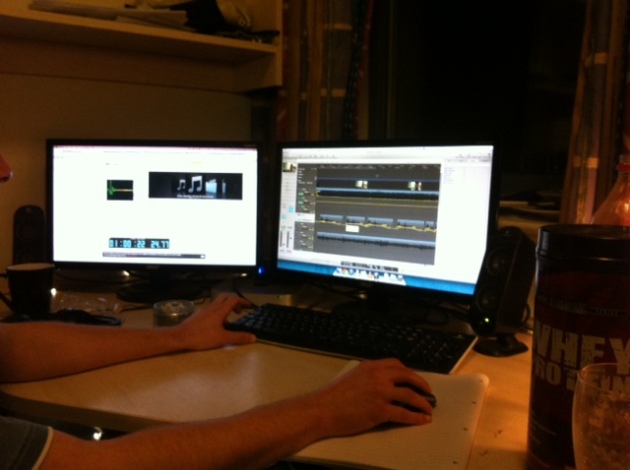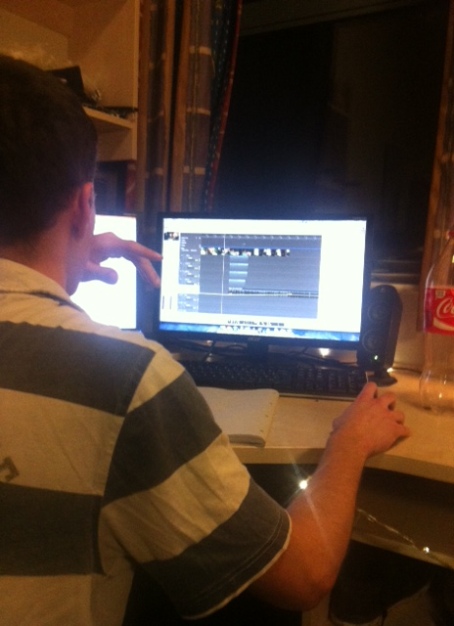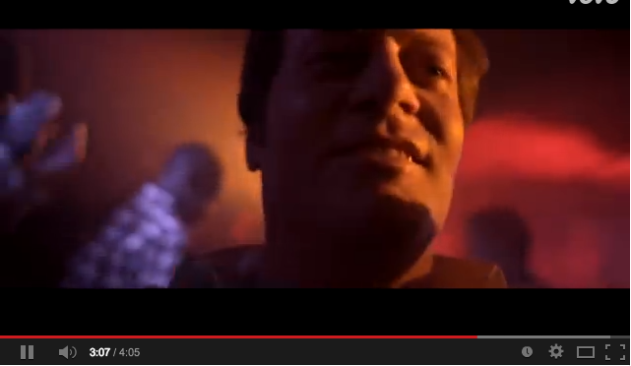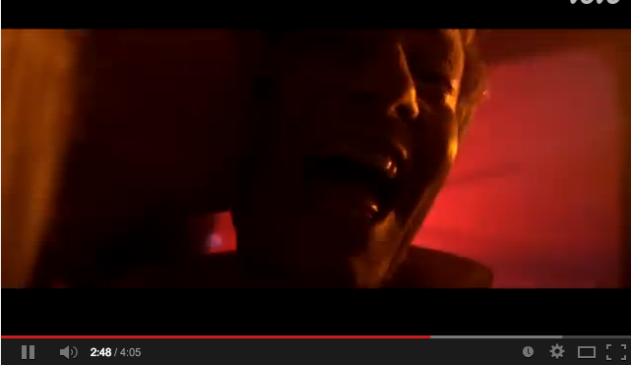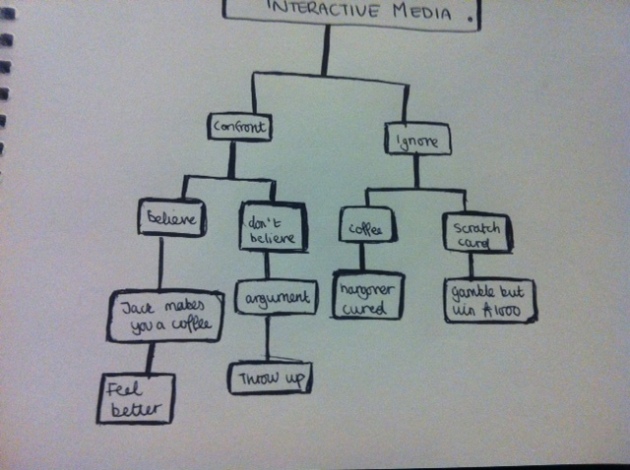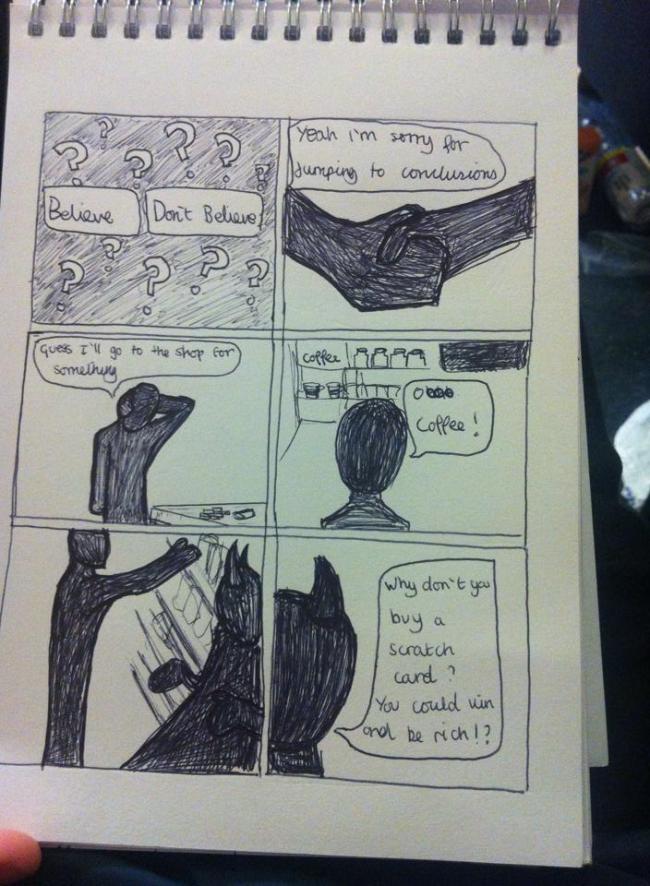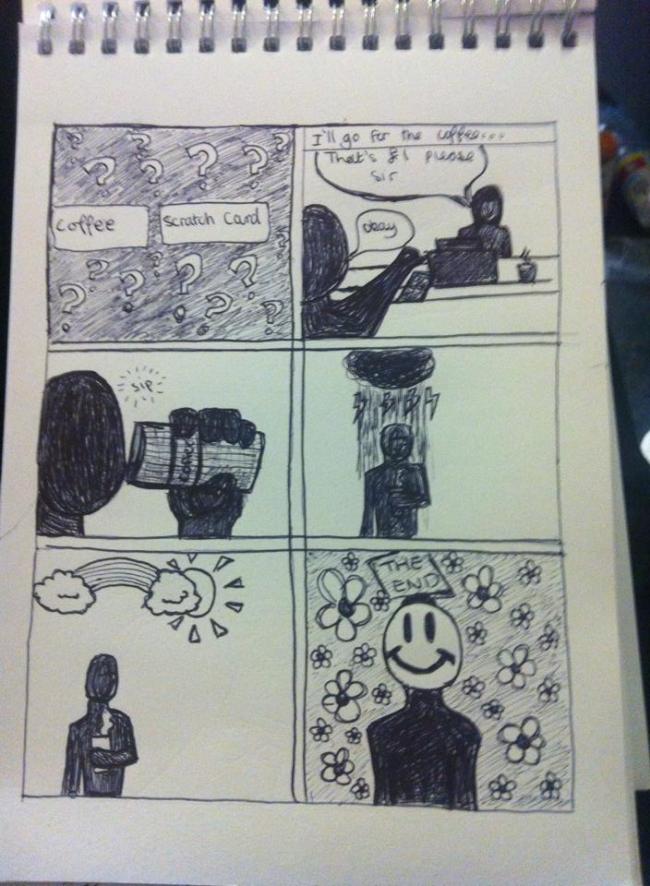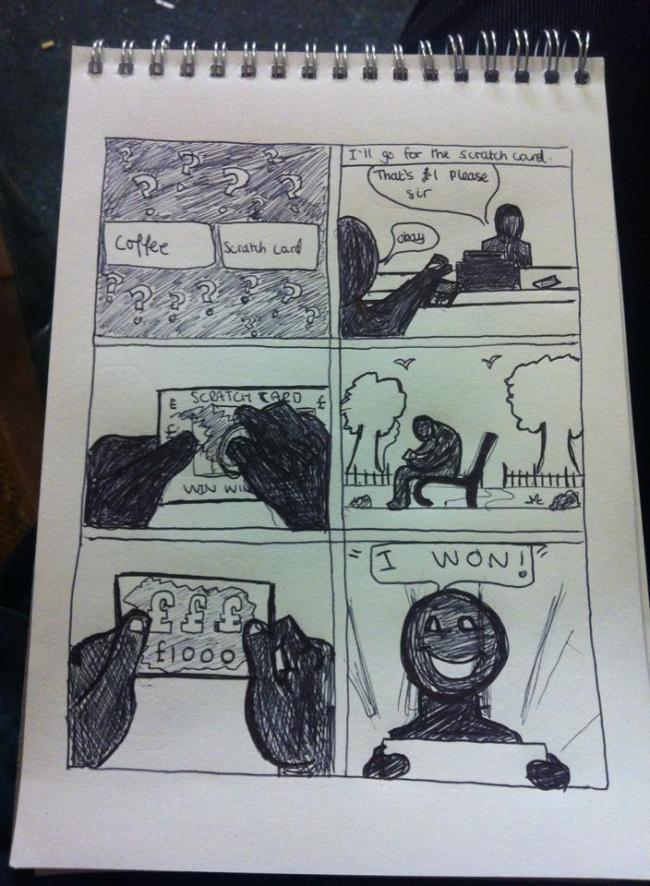The day the scripts were chosen and where we would be put in to groups, I was eager, but I had doubts that I would be put in a team where the group chemistry was low, just as it was in my group SISE project, where there were a few differences. I was chosen, to be part of the group for the script ‘The Sound of the Wall’ which was untitled at the time, written by Jess Dalgic.
“In summary the script tells the story of an elderly widower caught up in his neighbours domestic affairs, and when a specific incident occurs proving to result in violence, Benjamin (the widower) finds himself aiding his neighbour, a young Thai lady who has been cut on her heard due to her husbands hostile ways. With this, the central theme is brought forward, for both Benjamin and Keui (Thai wife) find they have a mutual admiration for piano music, a mutual interest that births friendship.” This was summarised by my group member Johnny.
Now as soon as the new group members (including myself) had read the script and become familiar with it, we decided that as a group it would be best if we started the group meetings as soon as possible so that we could then start planning for the project, like role assignments which where decided very quickly, I chose to be in charge of the sound because I never had worked with it before, and wanted to challenge myself and learn new skills, as I am normally more confident behind a camera, or behind a computer editing. It goes without saying that sometimes being friends in a group is not always a good thing, as we had many group meetings, but some group meetings we had ended up becoming revolved around idle conversations which distracted us from the task, and wasted time we had that could have been put to better use.
The planning for the project was mainly for the producer (Mazie), Director (Jess) and the Art Director (Lydia). So because of this, there was only one need for me in my role, which was to do some independent research in to sound directors and look at their work and styles and researching the Tascam equipment to see what I would be working with. I also created a sound list so that we would know exactly what sounds we WANT to hear, but also noting any sounds that can be done in foley if need be, not only this but because I thought that the planning may become overwhelming, I also included a prop list + costings, in the sound list document.
Okay, so now I was starting to wonder about my role for the sound, and put forward in a group meeting, a question on what music are we going to use for Benjamin’s first scene, Kuei’s scene where she brushes a few keys, and the last scene where Benjamin plays Kuei’s melody. After that group meeting I watched This Is England (2006), and I really liked the soundtrack to it, which was done by Ludovico Einaudi, who also worked on Black Swan and Insidious. I liked this piece because it seems simple but elegant, and the different tempos throughout the song can be used as if seperate piano melodie. Link – http://www.youtube.com/watch?v=AFGm62CYtpY
I thought this would be perfect for our film, but the director Jess, decided that we would go for something different, as her mum’s partner is a musician, a good piano player, and offered to compose a song, which is better for the blanket copyright we have at our Uni in regards to using other people’s music. Her partner said that he would compose the music, and record it in studio. This option seemed promising now as it meant that the quality of the music would be really good, but it also looks better that we have original music for ‘The Sound of the Wall’, which would hopefully get the group more marks for the project.
As time got on it was time to start scouting for actors, which we already knew would be difficult as Benjamin ideally is meant to be an old african/english man, and the fact that Kuei’s character is shy and has a basic grasp of English, so finding a Thai actress would be difficult due to language barriers etc. After we searched on many websites, it seemed that there was only a few that met our criteria. However we wanted to broaden our horizons, by suggesting that we created posters and flyers advertising the roles which we needed, which were only Kuei and Benjamin , as Toban’s character would be played by Jess’ uncle, who said that he would be happy too, plus he really suited the image. Mazie and Lydia went to Frenchay Campus, as put flyers up there, as the chances of finding someone is greater as it is a larger campus than Bower Ashton. The only regret is that we did not create the flyers soon enough as it probably could have saved us a lot of time and stress.
A few offers came in from actresses willing to play Kuei, but alas no offers to play Benjamin. This is when a crucial group meeting would happen, as we needed to decide whether to keep Benjamin’s character, or to be realistic given the time we had left to find actors, and discard the character’s ethnicity but search solely for men in that age range. We narrowed our choices down to two actors for Kuei, who both said that they had experience acting on projects. With a lucky breakthrough, we were able to find the perfect person for the job of Benjamin, a drama teacher/old actor named James, suggested to us by Anne-Marie a course leader. As we decided who our actors would be, we knew we had to crack on with the rest of production and planning!
Location was crucial for our script, as the story has only one setting, Benjamin’s house, and one room in Toban’s house. Due to the fact that Benjamin is meant to be an elderly widowed man who lives by himself in a basic house, we knew that it would be difficult to find one, as it actually needed to be a conjoined house so that we could establish that Benjamin lives in one house, and Toban & Kuei live next door, and we wanted to have specific shots showing this. Luckily, another breakthrough happened from Jess, her uncle and aunty offered for us to use their home, but obviously we didn’t have permission yet to use their neighbour’s house (specifically just a shot of Kuei standing behind the front door). This was a perfect breakthrough as it meant that the cost of the project would be low for the whole thing, as the actors also agreed to do it for free. Next it was just down to Lydia the Art Director to design the set and attain the props.The location wasn’t perfect, but the house had a dining room, living room, bedroom, and front-garden which was important for the script, but most importantly it was a terraced house, meaning we could portray the fact they live next door, an essential part of the films premise.
A few days before filming we were hit with some bad news, Jess’ Uncle and Aunty were beginning to refurbish the house, and scaffolders were booked a day after filming, but the scaffolding was already put in place and there was no way that we could (or allowed) to take it down, so this caused some problems for us. Not only this, but the location proved difficult for myself and my role of being sound director. Due to the location of the houses next to a busy road, it meant that when it came to filming the scenes outside of the house when Benjamin gives Kuei her broken CD case back, that we would probably encounter interruptions from traffic passing by, which ruined a few takes of filming. Because of this new problem, I knew that I’d have to try techniques that would limit the background noise, I’d do this by holding the boom pole close to the ground, underneath the actors but out of the shot, and pointing the microphone directly up so that it would only pick up the voices.
Okay, so now I was starting to wonder about my role for the sound, and put forward in a group meeting, a question on what music are we going to use for Benjamin’s first scene, Kuei’s scene where she brushes a few keys, and the last scene where Benjamin plays Kuei’s melody. After that group meeting I watched This Is England (2006), and I really liked the soundtrack to it, which was done by Ludovico Einaudi, who also worked on Black Swan and Insidious. I liked this piece because it seems simple but elegant, and the different tempos throughout the song can be used as if seperate piano melodie. Link – http://www.youtube.com/watch?v=AFGm62CYtpY
I thought this would be perfect for our film, but the director Jess, decided that we would go for something different, as her mum’s partner is a musician, a good piano player, and offered to compose a song, which is better for the blanket copyright we have at our Uni in regards to using other people’s music. Her partner said that he would compose the music, and record it in studio. This option seemed promising now as it meant that the quality of the music would be really good, but it also looks better that we have original music for ‘The Sound of the Wall’, which would hopefully get the group more marks for the project.

